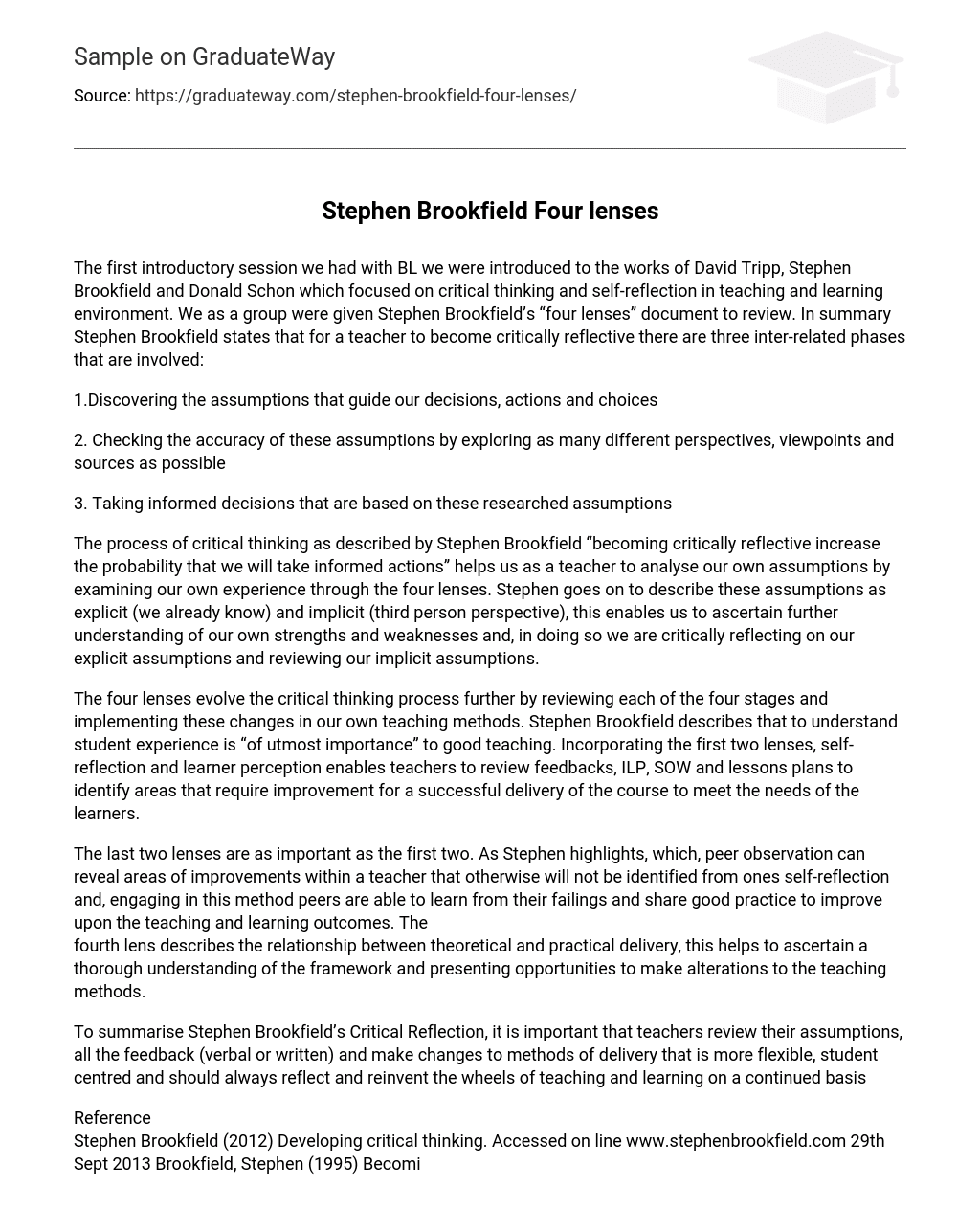In our initial meeting with BL, we were acquainted with the writings of David Tripp, Stephen Brookfield, and Donald Schon. These writings focus on critical thinking and self-reflection in the teaching and learning setting. As a team, we received Stephen Brookfield’s document titled “four lenses” to analyze. In this document, Stephen Brookfield describes three linked stages that a teacher needs to undergo in order to achieve critical reflection.
1. Exploring the assumptions that influence our decisions, actions, and choices.
2. Verify the correctness of these assumptions by examining multiple perspectives, viewpoints, and sources.
3. Making well-informed decisions based on the assumptions that have been researched.
According to Stephen Brookfield, the process of critical thinking involves becoming critically reflective, which in turn increases the likelihood that we will make informed decisions. This process is particularly beneficial for teachers, as it allows us to analyze our assumptions by reflecting on our own experiences through four different lenses. Brookfield distinguishes between explicit assumptions (knowledge we already possess) and implicit assumptions (perspectives from others). By examining these assumptions, we can gain a deeper understanding of our own strengths and weaknesses and engage in critical reflection about our explicit and implicit assumptions.
The four lenses expand on the critical thinking process by examining the four stages and applying these changes to our teaching methods. According to Stephen Brookfield, it is crucial to understand the student experience for effective teaching. By incorporating the first two lenses, self-reflection and learner perception, teachers can analyze feedback, ILP, SOW, and lesson plans to identify areas that need improvement in order to successfully deliver the course and meet the students’ needs.
The final two lenses carry the same importance as the initial two. Peer observation can reveal areas of improvement in a teacher that may not be identified through self-reflection. By engaging in this method, peers can learn from their mistakes and share successful practices to enhance teaching and learning outcomes. The fourth lens assesses the connection between theoretical and practical delivery, offering a chance to comprehend the framework thoroughly and make adjustments to teaching methods.
To put it simply, Stephen Brookfield emphasizes the need for teachers to constantly evaluate their assumptions, consider all forms of feedback, and adapt their teaching methods to be more flexible and student-centered. This reflection process should be ongoing and consistently drive innovation in teaching and learning.
Reference
Stephen Brookfield (2012) Developing critical thinking. Accessed on line www.stephenbrookfield.com 29th Sept 2013 Brookfield, Stephen (1995) Becoming a Critically Reflective Teacher. San-Francisco: Jossey-Bass.





